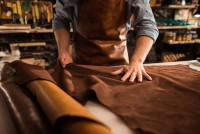

- Productos
- Atrás
-
 Automoción La sostenibilidad y la producción respetuosa con el medio ambiente, se han convertido en criterios importantes para los fabricantes de automóviles, sin embargo, las definiciones varían. Uno de los resultados es que los coches más livianos podrían reducir las emisiones de CO2 y de efecto invernadero. Tome el camino hacia la reducción de peso con los productos químicos TFL para cuero automotriz.
Automoción La sostenibilidad y la producción respetuosa con el medio ambiente, se han convertido en criterios importantes para los fabricantes de automóviles, sin embargo, las definiciones varían. Uno de los resultados es que los coches más livianos podrían reducir las emisiones de CO2 y de efecto invernadero. Tome el camino hacia la reducción de peso con los productos químicos TFL para cuero automotriz. -

-
 Tapicería Las pieles de cuero para tapicería deben ser tan versátiles como sus productos finales. Blanda, lisa con un agradable tacto suave, resistente a la suciedad con perfectas capacidades de protección física. Sea cual sea su característica, la piel es la elección perfecta para artículos de tapicería.
Tapicería Las pieles de cuero para tapicería deben ser tan versátiles como sus productos finales. Blanda, lisa con un agradable tacto suave, resistente a la suciedad con perfectas capacidades de protección física. Sea cual sea su característica, la piel es la elección perfecta para artículos de tapicería. -
 Calzado TFL ofrece los productos adecuados para cualquier tipo de cuero para la parte superior del calzado. Cueros robustos, gruesos y muy resistentes al agua o al desgarro o finos y ligeros con óptimas capacidades físicas y producidos cumpliendo con los más altos estándares en materia de sustancias peligrosas.
Calzado TFL ofrece los productos adecuados para cualquier tipo de cuero para la parte superior del calzado. Cueros robustos, gruesos y muy resistentes al agua o al desgarro o finos y ligeros con óptimas capacidades físicas y producidos cumpliendo con los más altos estándares en materia de sustancias peligrosas.
- Consejo
- Atrás
-

-

-

-
 Main Reaction - El blog de TFL Historias, incidentes, consejos y hechos en torno a los temas de cuero, química, moda, sostenibilidad y ecología. Nuestro equipo editorial, formado por curtidores experimentados, científicos, expertos en el mercado, especialistas en moda y comunicación, ha afilado sus lápices y le proporcionará contenido nuevo e inspirador de forma regular.
Main Reaction - El blog de TFL Historias, incidentes, consejos y hechos en torno a los temas de cuero, química, moda, sostenibilidad y ecología. Nuestro equipo editorial, formado por curtidores experimentados, científicos, expertos en el mercado, especialistas en moda y comunicación, ha afilado sus lápices y le proporcionará contenido nuevo e inspirador de forma regular.
- Tecnologías
- Atrás
-
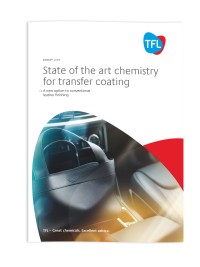 RODA® Line para recubrimientos por transferencia Recientemente, el recubrimiento por transferencia del cuero ha ganado una importancia significativa y está a punto de captar una parte sustancial del mercado actual de acabado. Esta tendencia se debe principalmente a las ventajas tecnológicas que ofrece la tecnología de recubrimiento por transferencia RODA® Line de TFL.
RODA® Line para recubrimientos por transferencia Recientemente, el recubrimiento por transferencia del cuero ha ganado una importancia significativa y está a punto de captar una parte sustancial del mercado actual de acabado. Esta tendencia se debe principalmente a las ventajas tecnológicas que ofrece la tecnología de recubrimiento por transferencia RODA® Line de TFL. -
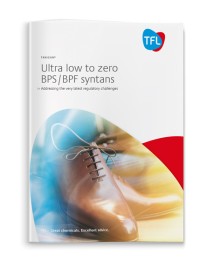
-
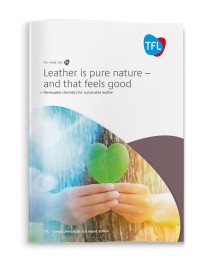
-
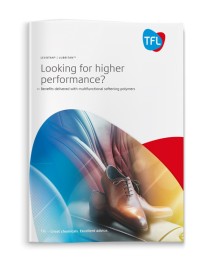
- Sienta la diferencia, ame la frescura La primera tecnología ofrecida a la industria del cuero, que es capaz de restringir el aumento de temperatura en la superficie del cuero cuando el cuero teñido se expone a la radiación solar.
- Prevención de olores en el interior del automóvil. El olfato es nuestro sentido más íntimo e individualista y, en el campo cambiante de los interiores de los automóviles, el olor del cuero puede ser la clave para lograr una ventaja competitiva.
- Cuero para automóviles: Potencial significativo de emisiones Las emisiones de compuestos orgánicos volátiles de los componentes del equipamiento del vehículo, como el cuero, pueden afectar la calidad del aire interior y, por lo tanto, la comodidad y la salud de los conductores y pasajeros.
- Calidad y Seguridad
- Certificaciones Las Normas Internacionales ISO garantizan que los productos y servicios de TFL sean seguros, fiables y de buena calidad.
- Certificaciones Las Normas Internacionales ISO garantizan que los productos y servicios de TFL sean seguros, fiables y de buena calidad.
- Acerca de TFL
- Atrás
-
 Nuestra compañía TFL es una empresa que opera a nivel mundial que produce productos químicos especiales para la industria del cuero e industrias relacionadas. TFL ofrece sus productos y soluciones innovadores a curtiembres, empresas de procesamiento de cuero y coaters, siempre esforzándose por introducir ideasnuevas en el mercado.
Nuestra compañía TFL es una empresa que opera a nivel mundial que produce productos químicos especiales para la industria del cuero e industrias relacionadas. TFL ofrece sus productos y soluciones innovadores a curtiembres, empresas de procesamiento de cuero y coaters, siempre esforzándose por introducir ideasnuevas en el mercado. -

-

-

- Historia TFL se fundó en 1996 cuando la unidad comercial de cuero de Ciba-Geigy se fusionó con los departamentos de cuero de Röhm y Stockhausen, ambas empresas miembros del Grupo Degussa-Hüls.
- Gerencia Los cuatro miembros de la Junta Ejecutiva de TFL reúnen sus amplias experiencias y conocimientos en química, ingeniería, finanzas, así como en ventas y marketing.
- Contactos

